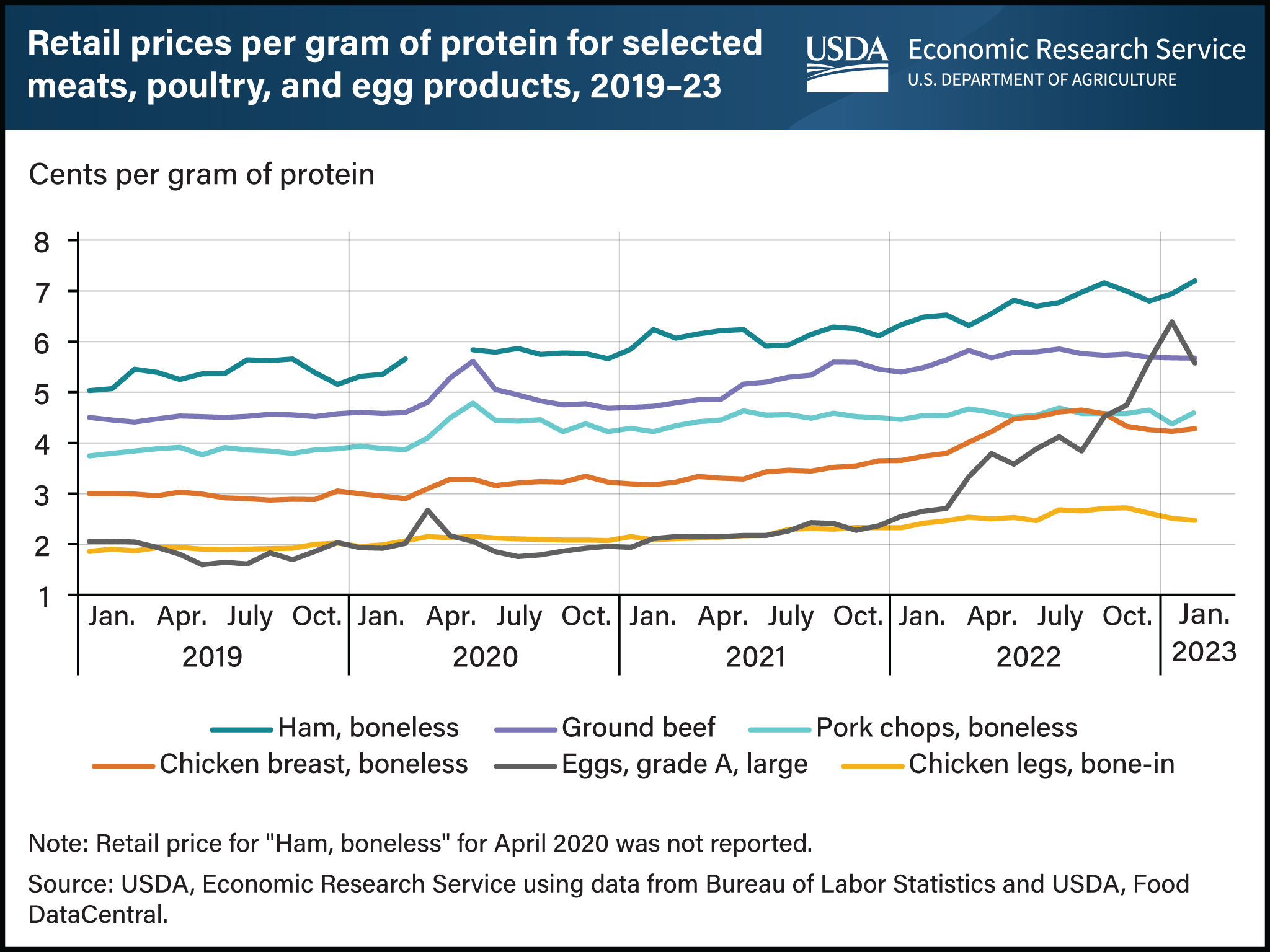Eggs became an increasingly expensive source of animal protein in 2022 and into early 2023
- by Adriana Valcu-Lisman and Mildred Haley
- 3/16/2023

Retail prices for various red meats, poultry, and egg products fluctuate and are influenced by various economic factors, including inflation. However, the protein content of animal products—a physical characteristic associated with products of animal origin—is fixed, allowing for dollar value per gram of protein comparisons. Between 2019 and 2022, the retail price per gram of protein for a number of animal products trended higher with inflation. Despite increasing in dollar value, the relative rankings of those selected products were mostly unchanged. During 2022, successive Highly Pathogenic Avian Influenza outbreaks adversely affected the U.S. egg supply. Decreases in supply combined with strong egg demand pushed retail egg prices to record levels. As egg prices surged in 2022 and early 2023, the cost per gram of protein rankings began to shift. On a per gram of protein basis, eggs were competitively priced with boneless chicken breasts and pork chops by October 2022. By December 2022, eggs were on par with ground beef. In February, eggs were still one of the most expensive sources of protein among the selected animal products at 5.7 cents per gram of protein. This comes despite a 12.8-percent drop from the January peak of 6.4 cents. Historically, eggs and chicken legs have been the two lowest cost sources of protein among red meats, poultry, and egg products. Between 2019 and 2021, eggs were the least expensive source of protein in 20 out of 36 months. This chart is drawn from USDA, Economic Research Service’s Livestock, Dairy and Poultry Outlook: February 2023.

